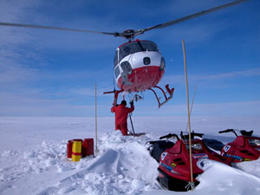
Assessing the contribution of the Antarctic Ice Sheet to sea level since the Last Glacial Maximum (~20,000 years ago) via geophysical observations and modelling.
Understanding ice sheets is highly strategic for Australia, and scientific capability in this field is limited to a few researchers, primarily based in Hobart.
This research will advance our understanding of how the oceans influence basal melting of Antarctic ice shelves and provide estimates of Antarctic ice sheet contributions to sea level change since the Last Glacial Maximum 20,000 years ago. It will review the ice sheet extent, profile its retreat history and identify drivers from solid earth, and the atmosphere and ocean.
The three primary objectives are:
Additionally, this modelling should better quantify how much the East Antarctic Ice Sheet has contributed to sea level since the Last Glacial Maximum.
The overall result will be the development of unique Australian ice sheet modelling capabilities.
Interested in working with this team? PhD Scholarships available now.